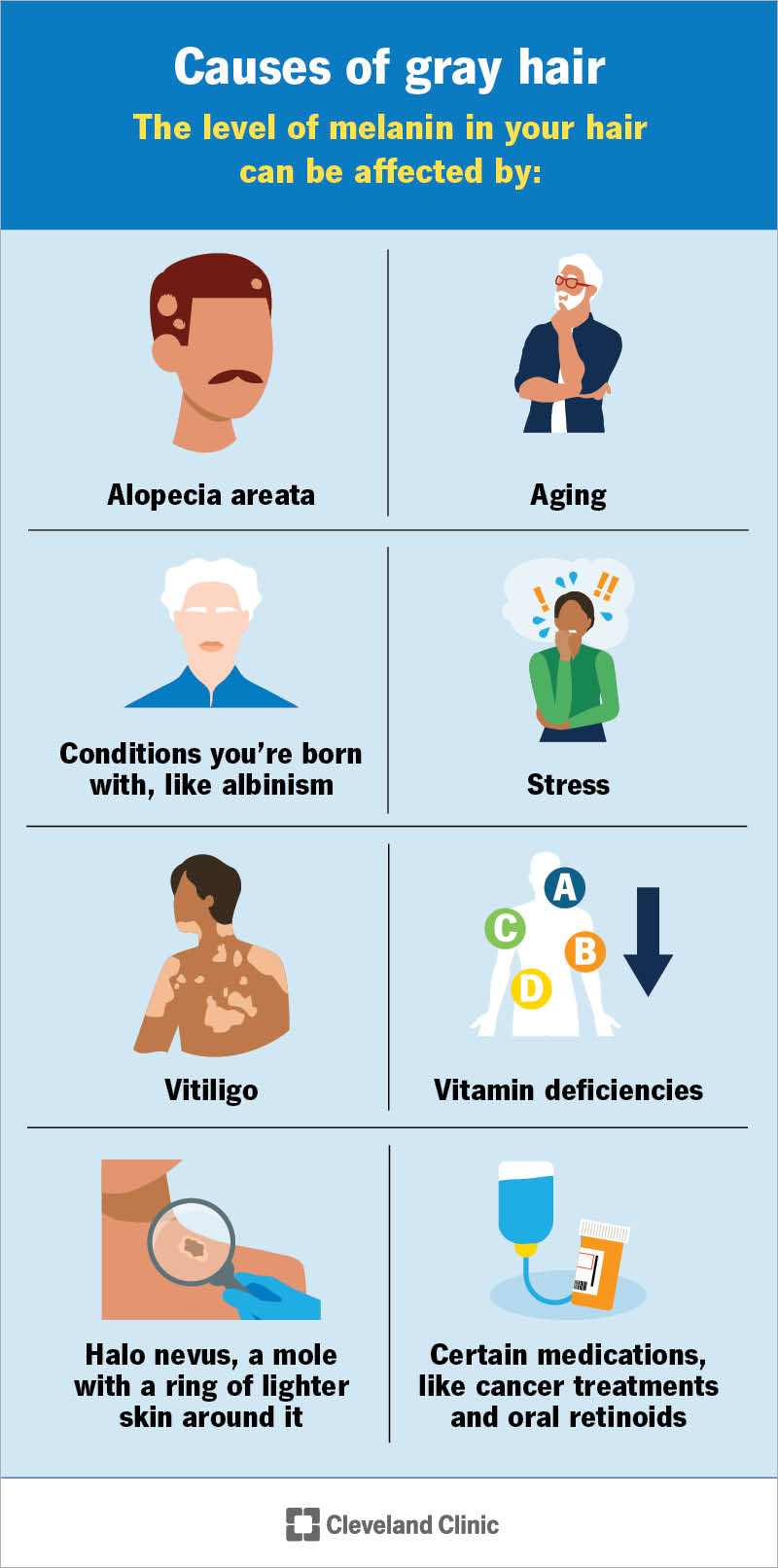Gray hair is a part of aging. As you get older, the cells that give your hair its color lose their pigment. This makes your hair look gray, white or silver. Genetic conditions, vitamin deficiencies and medications also sometimes cause gray or white hair.
Advertisement
Cleveland Clinic is a non-profit academic medical center. Advertising on our site helps support our mission. We do not endorse non-Cleveland Clinic products or services. Policy
Gray hair is something that happens to all of us as we age. Strands of hair start growing in shades of gray, white or silver. Over time, most or all of your hair changes to gray. The strands might also be thicker, wirier or coarser.
Advertisement
Cleveland Clinic is a non-profit academic medical center. Advertising on our site helps support our mission. We do not endorse non-Cleveland Clinic products or services. Policy
Graying doesn’t just affect the hair on your head. Facial hair, body hair, pubic hair, eyelashes and eyebrows also turn gray or white.
Most people start getting gray hairs in their 30s or 40s. But the age you start graying and how long it takes to have a full head of gray hair can vary a lot. Some people go fully gray within 10 years of their first grays. For others, it’s slower. For example, you may see your first gray hairs in your 20s, maybe a few more in your 30s, and then go fully gray in your 50s or 60s. Or you might never have a full head of gray hair.
You also might get gray facial hair, pubic hair or body hair long before the hair on your head grays — and vice-versa.

You get your hair color from melanin, a pigment that colors your skin, eyes and hair. The more melanin you have in your hair, the darker it is. So, gray or white hair comes from having little to no melanin.
You start going gray as you age because cells in your hair follicles (melanocytes) produce less melanin. Other conditions that affect the level of melanin in your hair include:
Advertisement
Yes, stress can trigger changes in the pigment-producing cells of your hair. This can lead to gray hair.
But it doesn’t happen overnight. Your hair gets its color before it starts growing out of your head. Once you can see it, it’s the color your body gave it. So, you might notice gray hairs growing in after a period of intense stress.
The good news? When stress levels come down, those once-gray hairs could grow back in their original color.
Premature graying is when you have gray hair before the age of 20 if you have a light skin tone and before age 30 if you have a dark skin tone. Genetics has a lot to do with the age and how fast you start going gray. But other factors, like smoking and vitamin deficiencies, can also sometimes contribute.
You can’t stop your hair from going gray as you age. If you have a vitamin deficiency or other conditions causing gray hair, you may be able to stop or slow down the graying by treating the condition.
You probably won’t be able to reverse any gray you already have — though you can dye it to cover up the gray if it bothers you. Ask your healthcare provider what to expect.
Salt-and-pepper. Distinguished. Platinum. Whatever you call gray hair, we can’t control when or how those streaks of silver will appear for each of us. But how you wear your new look (a trendy cut? A streak of color?) is totally up to you.
Advertisement
Cleveland Clinic’s primary care providers offer lifelong medical care. From sinus infections and high blood pressure to preventive screening, we’re here for you.

Last reviewed on 09/30/2025.
Learn more about the Health Library and our editorial process.